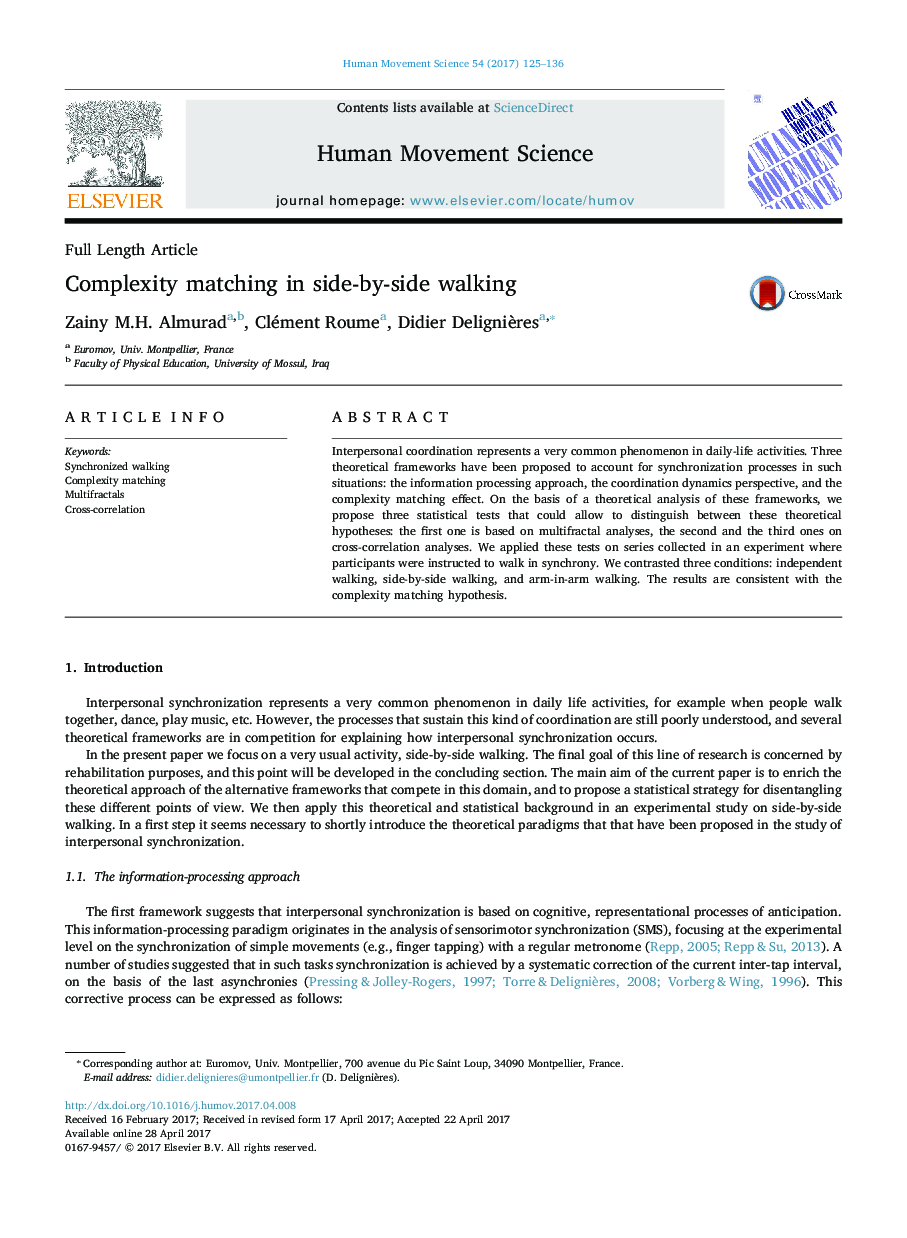| Article ID | Journal | Published Year | Pages | File Type |
|---|---|---|---|---|
| 5041972 | Human Movement Science | 2017 | 12 Pages |
â¢Interpersonal coordination is a very common phenomenon in daily-life activities.â¢We present the alternative frameworks which have been proposed for accounting for such situations.â¢We propose statistical tests, for distinguishing between these theoretical hypotheses.â¢We applied these tests on series collected during synchronized walking.â¢The results are consistent with the complexity matching hypothesis.
Interpersonal coordination represents a very common phenomenon in daily-life activities. Three theoretical frameworks have been proposed to account for synchronization processes in such situations: the information processing approach, the coordination dynamics perspective, and the complexity matching effect. On the basis of a theoretical analysis of these frameworks, we propose three statistical tests that could allow to distinguish between these theoretical hypotheses: the first one is based on multifractal analyses, the second and the third ones on cross-correlation analyses. We applied these tests on series collected in an experiment where participants were instructed to walk in synchrony. We contrasted three conditions: independent walking, side-by-side walking, and arm-in-arm walking. The results are consistent with the complexity matching hypothesis.
